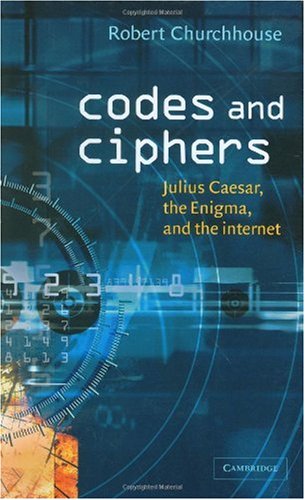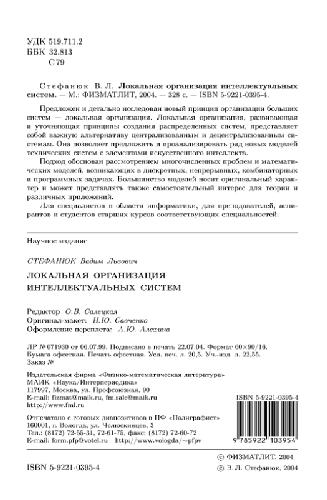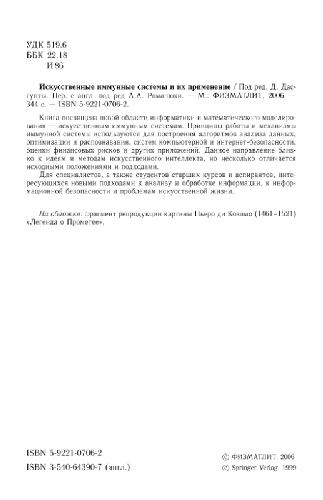R. F. Churchhouse052181054X, 0521008905, 0511042183, 9780521008907, 9780521810548, 9780511042188
Table of contents :
Team-kB……Page 1
Contents……Page 7
Some aspects of secure communication……Page 13
Julius Caesar’s cipher……Page 14
Some basic definitions……Page 15
Three stages to decryption: identification, breaking andsetting……Page 16
Codes andciphers……Page 17
Assessing the strengthof a cipher system……Page 19
Error detecting andcorrecting codes……Page 20
Other methods of concealing messages……Page 21
Modular arithmetic……Page 22
Gender……Page 23
Endmatter……Page 24
Julius Caesar ciphers andtheir solution……Page 25
Simple substitutionciphers……Page 27
Howto solve a simple substitutioncipher……Page 29
Letter frequencies inlanguages other thanEnglish……Page 36
Howmany letters are neededto solve a simple substitutioncipher?……Page 38
Strengthening Julius Caesar: Vigenère ciphers……Page 40
Howto solve a Vigenère cipher……Page 42
Indicators……Page 45
Recognising ‘depths’……Page 46
Jefferson’s cylinder……Page 49
Simple transposition……Page 52
Double transposition……Page 56
Other forms of transposition……Page 60
Assessment of the security of transpositionciphers……Page 63
Double encipherment ingeneral……Page 64
Monographto digraph……Page 66
MDTMciphers……Page 68
Digraphto digraph……Page 70
Playfair encipherment……Page 71
Playfair decipherment……Page 72
Double Playfair……Page 73
Characteristics of codes……Page 76
One-part andtwo-part codes……Page 77
Code plus additive……Page 79
7 Ciphers for spies……Page 84
Stencil ciphers……Page 85
Bookciphers……Page 87
Solving a bookcipher……Page 91
Disastrous errors inusing a bookcipher……Page 98
‘Garbo”s ciphers……Page 100
One-time pad……Page 104
Randomsequences……Page 106
Coinspinning……Page 107
Throwing dice……Page 108
Amplifier noise……Page 109
Pseudo-randomsequences……Page 110
Linear recurrences……Page 111
Using a binary streamof key for encipherment……Page 112
Binary linear sequences as key generators……Page 113
Improving the security of binary keys……Page 116
The mid-square method……Page 118
Linear congruential generators……Page 119
Historical background……Page 122
The original Enigma……Page 124
Encipherment using wiredwheels……Page 128
Encipherment by the Enigma……Page 130
The Achilles heel of the Enigma……Page 133
The indicator ‘chains’ inthe Enigma……Page 137
Identifying R1 andits setting……Page 140
The Abwehr Enigma……Page 144
Historical background……Page 145
Structure of the Hagelinmachine……Page 146
Encipherment onthe Hagelin……Page 147
Choosing the cage for the Hagelin……Page 150
The theoretical ‘workfactor’ for the Hagelin……Page 154
Solving the Hagelinfroma stretchof key……Page 155
The slide……Page 159
Overlapping……Page 160
Solving the Hagelinfromcipher texts only……Page 162
The SZ42: a pre- electronic machine……Page 165
Encipherment onthe SZ42……Page 167
Breaking andsetting the SZ42……Page 170
Modifications to the SZ42……Page 171
Historical background……Page 173
Protectionof programs anddata……Page 175
Encipherment of programs, data andmessages……Page 176
The Diffie–Hellmankey exchange system……Page 178
Strengthof the Diffie–Hellmansystem……Page 180
Generalisationof simple substitution……Page 182
Factorisationof large integers……Page 183
The standardmethodof factorisation……Page 184
Fermat’s ‘Little Theorem’……Page 186
Encipherment anddecipherment keys inthe RSAsystem……Page 187
The encipherment anddecipherment processes inthe RSAsystem……Page 190
Howdoes the key- owner reply to correspondents?……Page 194
The Data EncryptionStandard(DES)……Page 195
Security of the DES……Page 196
Using bothRSAandDES……Page 198
Beyondthe DES……Page 199
Authenticationandsignature verification……Page 200
Elliptic curve cryptography……Page 201
Appendix……Page 202
Solutions to problems……Page 230
References……Page 242
Name index……Page 247
Subject index……Page 249







Reviews
There are no reviews yet.